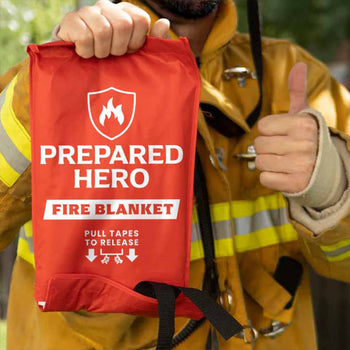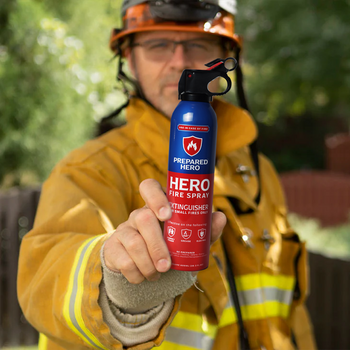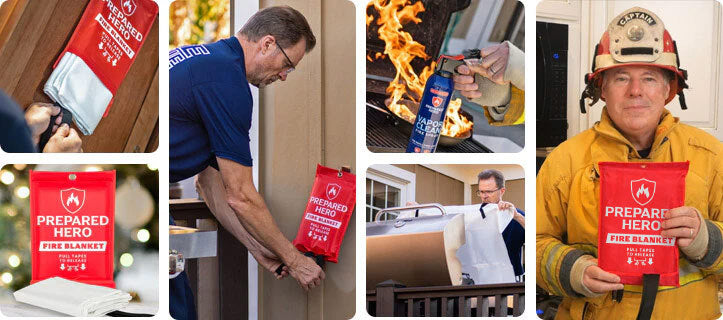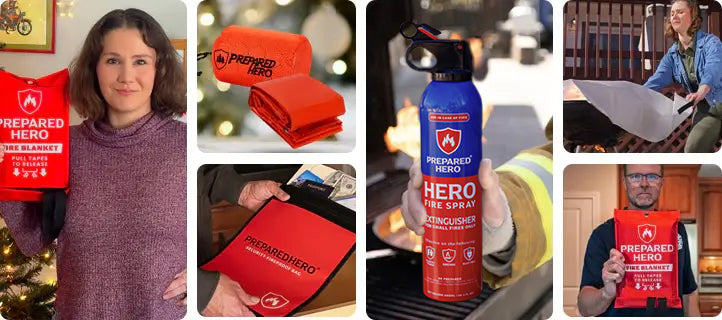Where you put your smoke detectors matters just as much as installing them. Proper placement makes sure they can detect...
A house fire is one of the most dangerous accidents you can encounter. It puts lives in danger and can cause massive property damage. To protect your loved ones from fire, you must understand how fast a fire spreads in a house.
In this blog post, we'll answer the question: how fast does fire spread in a house?
How Fast Does Fire Spread?
Fire can spread in as fast as 30 seconds. In particular, fire spreads faster as fuel, heat, and oxygen increase. How quickly these elements increase determines how fast a fire spreads.
For instance, if a house has more fuel, the fire will spread faster. Similarly, the bigger the heat source, the quicker the fire will spread.
With these in mind, you must know how fast a fire can spread under certain conditions. The following section explains how fast fire spreads in a house by the minute.
How Fast Does Fire Spread in a House By the Minute?

So how fast does fire spread in a house? Here's a breakdown of how fast fire spreads by the minute. Follow along to protect yourself, your family, and your property.
The Fire Starts
Fire begins when oxidation creates heat faster than it releases it. This quickly causes combustion and flames.
For instance, you're heating vegetable oil. You then spill grease directly onto the flame or electric burner. The grease ignites into flames, causing a flash. In 30 seconds, the small flame starts a grease fire.
30 Seconds
Fire starts to spread in 30 seconds. Fuel (e.g., grease residue, wood, paper) will then burn and cause flames to spread.
After this, other fire hazards at home can catch fire. Next, the fire will generate smoke that includes poisonous gases like carbon monoxide and hydrogen sulfide.
If you catch fire at this point, use the right fire extinguisher type for the fire you need to put out. You can check our guide explaining the different types of fire.
One Minute
As the fire grows bigger and hotter, more objects will ignite because of the spreading flames. These include cabinets, wallpaper, curtains, and carpets. With the fire spreading, a dense plume of hot smoke rises and spreads across the ceiling.
Breathing the smoke at this point can quickly burn your breathing passages. Fire also generates poisonous gases at this point, so two or three breaths of it can make you pass out.
Two Minutes
The fire gets stronger in two minutes, and the smoke and hot air go over 190 °F. The heat from the fire then radiates to other parts of the house, heating up chairs, tables, shelves, beds, and other furniture.
Next, the cloud of smoke thickens and deepens under the ceiling. Carbon monoxide and cyanide levels also steadily increase at this point― at 3,400 parts per million (normal levels in enclosed room fires).
On top of that, survival time gets cut to less than one minute. Research shows that carbon monoxide poisoning causes more fire-related deaths than any toxic combustion product.
Once the smoky layer goes into the door gap, an open window, or a vent, it quickly streams out of the room. Then, the poisonous air goes through the hallways and up to the second floor.
Three Minutes

In three minutes, the fire's temperature rises to 400 °F, which is hot enough to kill people. The fire will continue consuming furniture and storage as it generates more heat.
Accompanying the heat is an extremely dense smoke cloud hovering a few feet above the ground. It also likely includes more toxic chemicals like lead, arsenic, ammonia, hydrogen chloride, and isocyanates.
At this point, the fire can spread in two ways: direct contact and auto-ignition. When objects auto-ignite, they spontaneously burst into flames without touching them. The auto-ignition temperatures of hardwood and softwood used in houses fall between 595 °F and 739 °F.
Three and a Half Minutes
In three and a half minutes, the heat in a house fire can reach 1,100 °F. At this point, a flashover occurs.
Everything in the room bursts into flames— chairs, tables, appliances, wall decor, and more. Additionally, the oxygen is virtually sucked out because it's used up during rapid combustion.
Then, glass windows will shatter, and balls of fire will shoot out of doors and windows. The second floor will also be filled with thick, hot smoke that makes the stairs impassible.
Four Minutes
In four minutes, the temperature will reach up to 1,400 °F. At this point, the other rooms in the house are at severe risk. Flames will quickly travel horizontally and vertically through rooms.
Five Minutes
In five minutes, the house enters the decay stage (the longest one). This occurs when the available fuel and oxygen decrease.
Each house fire is different, so the rate at which a fire spreads varies. But in general, flames can fully engulf a house in as fast as five minutes. It will also take at least an hour for a house to burn down completely.
Preventing a House Fire

House fires spread quickly, so you must protect yourself and your loved ones from them. Follow the tips below to prevent a house fire:
Kitchen Safety
- Don't leave the kitchen unattended when you are cooking food. If you have to leave the kitchen, ask someone to watch the kitchen.
- Put grills at least ten feet away from decks, overhanging branches, sheds, and other structures.
- Don't wear loose clothing while cooking. Loose sleeves can catch fire easily.
- Keep a fire extinguisher, fire spray, or fire blanket in your kitchen.
Electrical Safety
- Don't overload your extension cords and outlets.
- Replace all worn or damaged cords immediately.
- Don't place cords under rugs or carpets.
- Turn off hot switches. Have them replaced right away.
Holiday Safety
- Christmas lights are one of the leading causes of house fires during the holidays. Turn them off when they're not in use, when you go to sleep, or when you leave the house.
- Place candles at least one foot away from flammable materials or use flameless candles.
- Put your Christmas tree at least three feet away from any heat source, like fireplaces, portable heaters, and candles.
Fireplace Safety
- Have your chimney and fireplace inspected and cleaned annually. Check for damages monthly.
- Use a fireplace screen to prevent sparks and logs from causing a fire.
- Make sure to completely put out your fire pit or fireplace before leaving the house or going to bed.
Child Safety
- Teach children that fire is dangerous and not a toy.
- Keep matches and lighters out of children's reach and sight. Lock them in cabinets if possible.
- Never leave children near sources of heat (e.g., candles and boiling water), even for a short period, since they can burn your house down.
Frequently Asked Questions

How fast does a house fire double in size?
A fire can double in size every 30 seconds. It can cause everything in a room to burn in as fast as three minutes. After five minutes, the house will decay and completely burn down in as fast as one hour.
Why do house fires spread so quickly?
House fires spread so quickly because of increasing heat, fuel, and oxygen. Smoke and flames can readily travel through the air and spread to other parts of the house. For this reason, you need to have working smoke detectors in your house.
How long does it take for fire to spread in a building?
It takes as fast as 30 seconds for fire to spread in a building. However, the exact time depends on the size of the building. It also takes at least one hour for a fire to burn down a building completely.
How fast does fire spread per minute?
In a minute, the fire becomes bigger and hotter, and the smoke fills the room. Then, more objects will ignite because of the spreading flames. With the fire spreading, a dense plume of hot smoke rises and spreads across the ceiling. In two minutes, the fire gets stronger and goes over 190 °F. In three minutes, the temperature increases to 400 °F, which is hot enough to kill people.
Should you go up or down in a fire?
You should go down and stay as low to the ground as possible in a fire because the smoke will rise toward the ceiling. Then, drop to the floor and quickly crawl towards the exit.
Does fire spread up or down?
Fire spreads up. But in an enclosed room, the fire gets trapped once it hits the ceiling. The fire then travels horizontally, spreading across the entire room or floor.
Conclusion
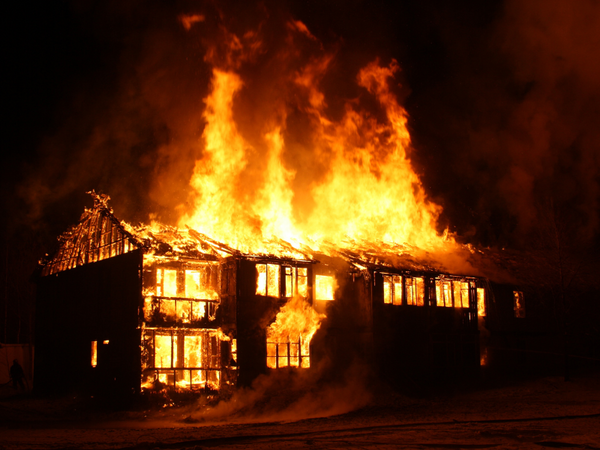
Don't underestimate the power of a small flame― it can quickly turn into a raging inferno.
But with some effort, you can prevent it from burning your home. By taking steps to prevent house fires, you reduce the risk of a devastating blaze.
Speaking of preventing fires, complete your fire prevention kit as soon as possible. Drop by Prepared Hero to get reliable fire prevention tools now!


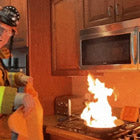 Fire
Fire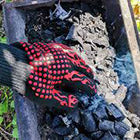 Safety
Safety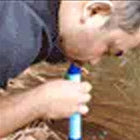 Survival
Survival Protection
Protection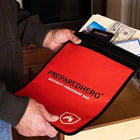 New
New
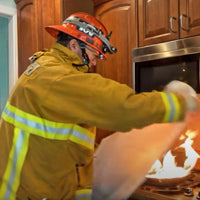 Fire
Fire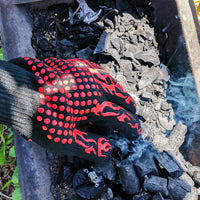 Safety
Safety Survival
Survival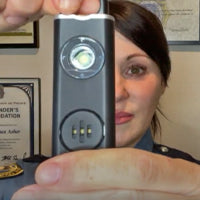 Protection
Protection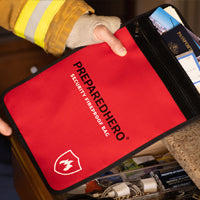 New
New
